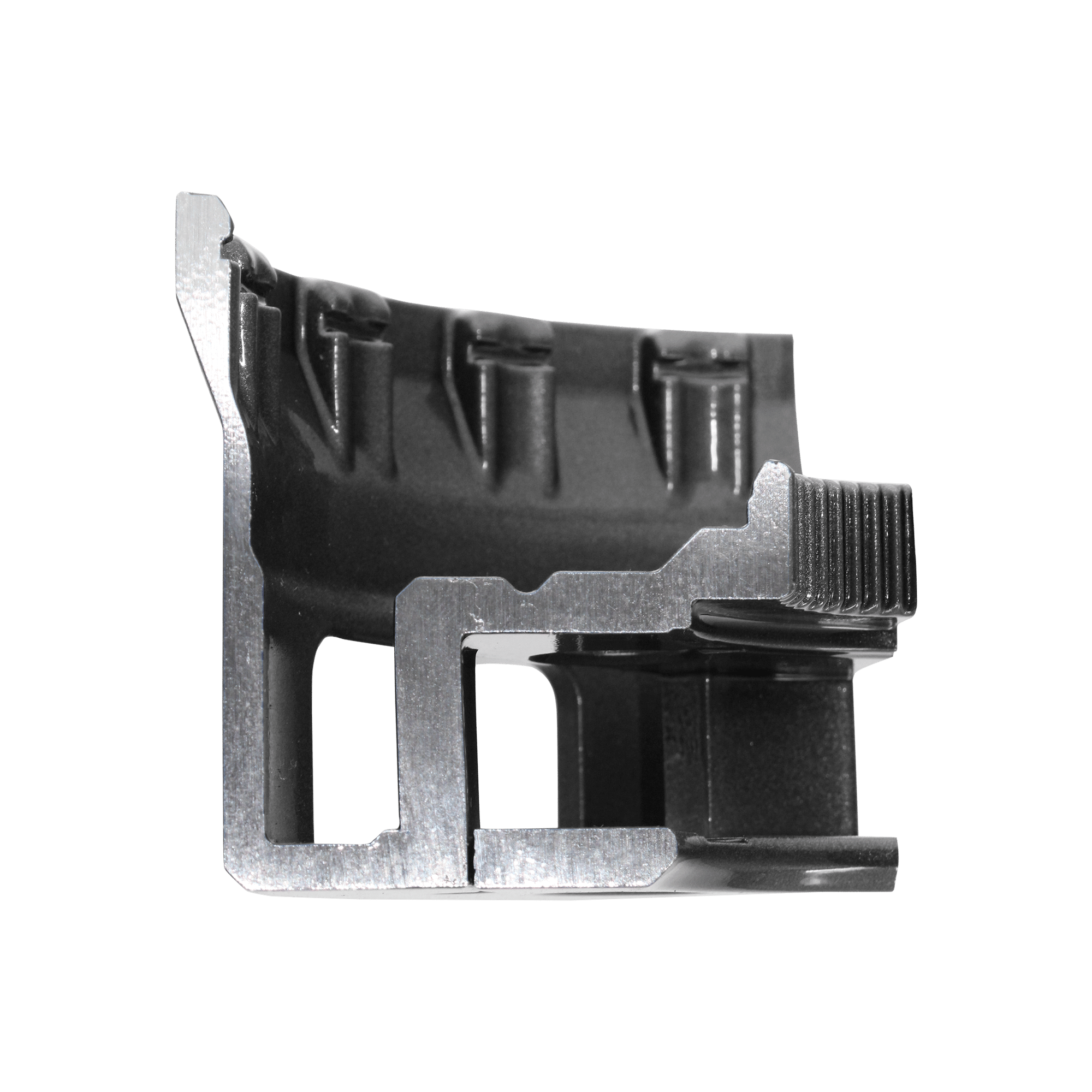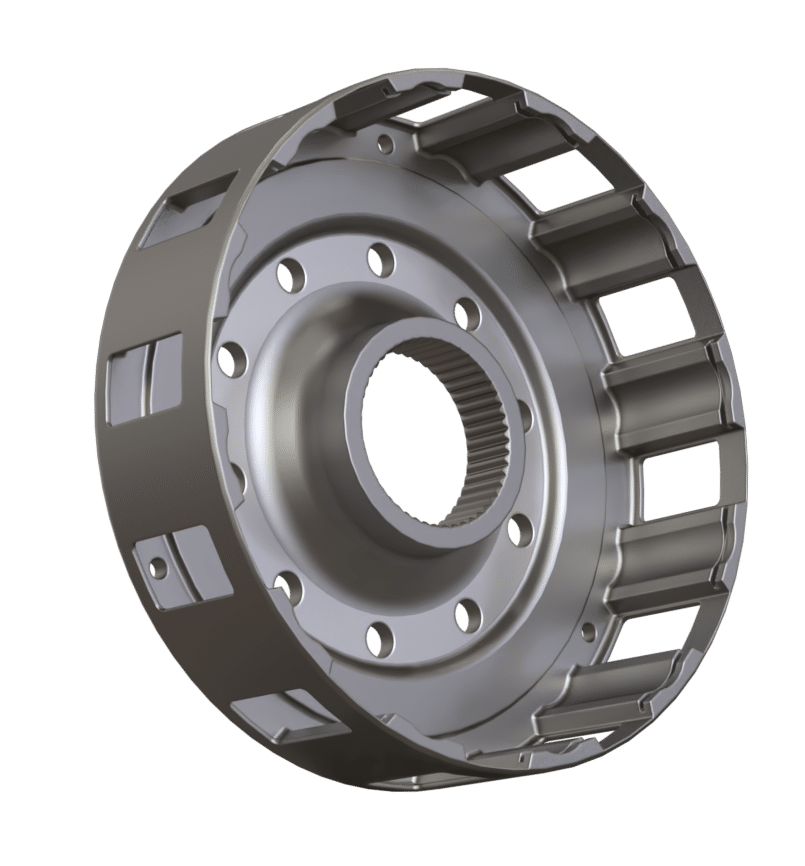What is Flowforming?
Flowforming is a cold rotary forming process where a rotating metal preform is formed over a tool by (typically) three rollers.
The rollers deform the preform, forcing it against the tool (also known as a mandrel), axially lengthening and radially thinning the material.
The material will take on the reverse profile of the mandrel, allowing the forming of features such as splines and piston seal surfaces.












